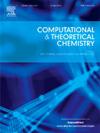Predicting thermally-stable fluids for vanadium flow battery based on conductor-like screening model for realistic solvation (COSMO-RS) theory
IF 3
3区 化学
Q3 CHEMISTRY, PHYSICAL
引用次数: 0
Abstract
All vanadium redox flow batteries (VRFBs) are emerging as a viable option for large-scale energy storage, given their long lifespan, and high energy efficiency. However, optimizing the thermal stability and solubility of vanadium electrolytes remains a critical challenge, particularly under extreme temperature conditions. In this study, the conductor-like screening model for real solvents (COSMO-RS) was employed to computationally predict the thermal stability and solubility of vanadium electrolytes. Fifteen common ions, including sulfate, nitrate, and chloride, were predicted for their potential to enhance electrolyte performance. The computational results revealed that nitrate ions significantly improve thermal stability, while zinc ions offer better solubility at lower concentrations. Additionally, a range of additives was evaluated, and compounds such as zinc nitrate (Zn(NO3)2) and magnesium nitrate (Mg(NO3)2) were identified as promising candidates, increasing solubility at the temperature range from 20 °C to 70 °C. These findings demonstrated the effectiveness of COSMO-RS as a high-throughput prediction method for the development of advanced VRFB electrolytes, offering a cost-effective and time-efficient approach to optimize flow battery performance under varying environmental conditions.

基于现实溶剂化类导体筛选模型(cosmos - rs)理论的钒液流电池热稳定流体预测
全钒氧化还原液流电池(vrfb)由于其长寿命和高能效,正成为大规模储能的可行选择。然而,优化钒电解质的热稳定性和溶解度仍然是一个关键的挑战,特别是在极端温度条件下。本研究采用真实溶剂类导体筛选模型(cosmos - rs)对钒电解质的热稳定性和溶解度进行了计算预测。包括硫酸盐、硝酸盐和氯化物在内的15种常见离子被预测具有增强电解质性能的潜力。计算结果表明,硝酸盐离子显著提高了热稳定性,而锌离子在较低浓度下具有较好的溶解性。此外,对一系列添加剂进行了评估,并确定了硝酸锌(Zn(NO3)2)和硝酸镁(Mg(NO3)2)等化合物为有希望的候选化合物,在20°C至70°C的温度范围内提高了溶解度。这些发现证明了cosmos - rs作为开发先进VRFB电解质的高通量预测方法的有效性,为优化不同环境条件下的液流电池性能提供了一种经济高效的方法。
本文章由计算机程序翻译,如有差异,请以英文原文为准。
求助全文
约1分钟内获得全文
求助全文
来源期刊

Computational and Theoretical Chemistry
CHEMISTRY, PHYSICAL-
CiteScore
4.20
自引率
10.70%
发文量
331
审稿时长
31 days
期刊介绍:
Computational and Theoretical Chemistry publishes high quality, original reports of significance in computational and theoretical chemistry including those that deal with problems of structure, properties, energetics, weak interactions, reaction mechanisms, catalysis, and reaction rates involving atoms, molecules, clusters, surfaces, and bulk matter.
 求助内容:
求助内容: 应助结果提醒方式:
应助结果提醒方式:


